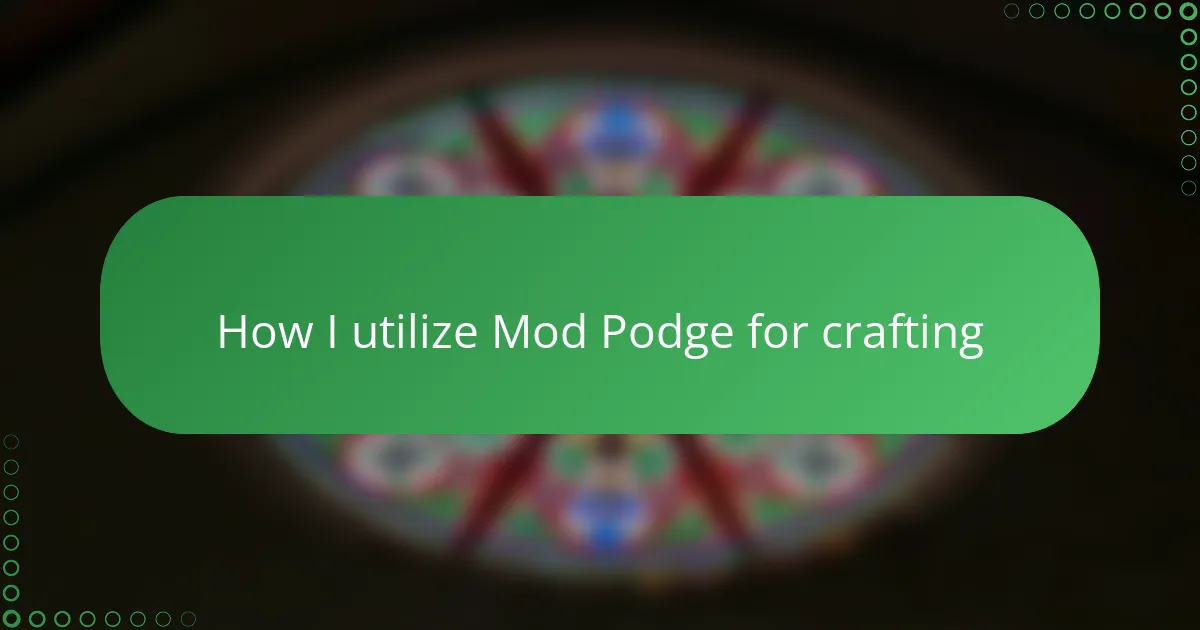Key takeaways
- Mod Podge is a versatile medium for sealing, finishing, and protecting handmade paper crafts.
- Using the right tools, like sharp craft knives and soft brushes, is crucial for achieving precise and professional results.
- Applying multiple thin layers of Mod Podge, along with light sanding between coats, enhances durability and finish quality.
- Patience is essential in crafting; allowing projects to cure fully leads to better outcomes and prevents issues such as wrinkles and peeling.
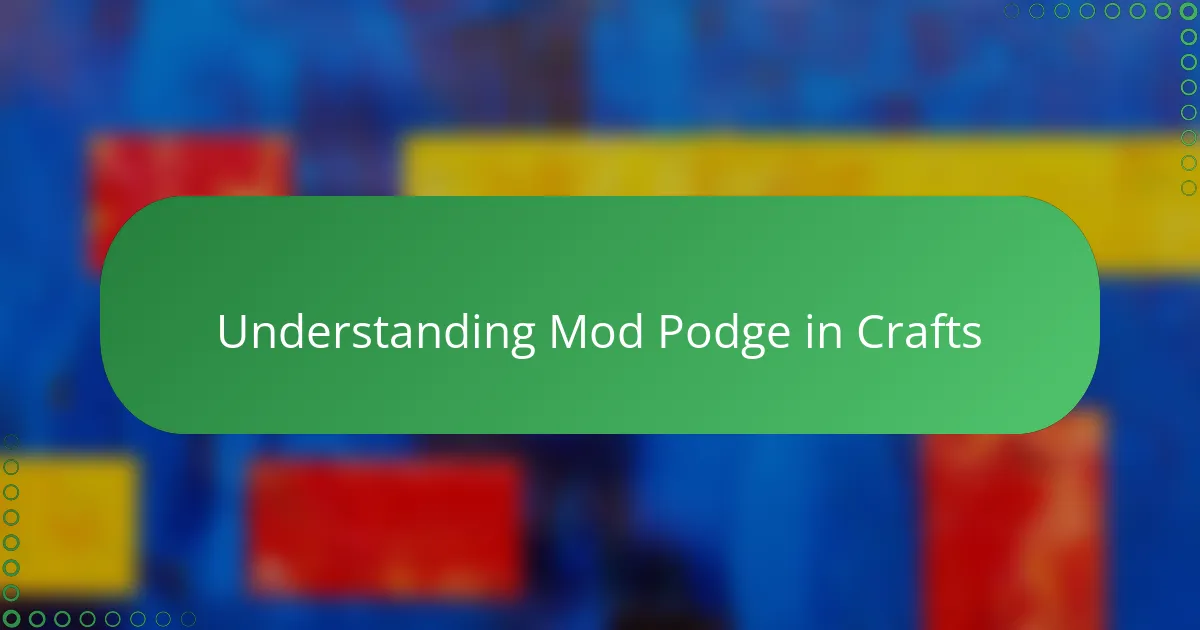
Understanding Mod Podge in Crafts
Mod Podge is more than just a glue—it’s a versatile medium that brings a project to life by sealing, finishing, and protecting your crafts all in one step. I remember the first time I used it on a handmade paper creation; it felt like magic watching the paper transform from fragile to durable with just a few brush strokes. Have you ever wondered how a simple product can combine adhesive and finish so seamlessly? That’s exactly the charm of Mod Podge.
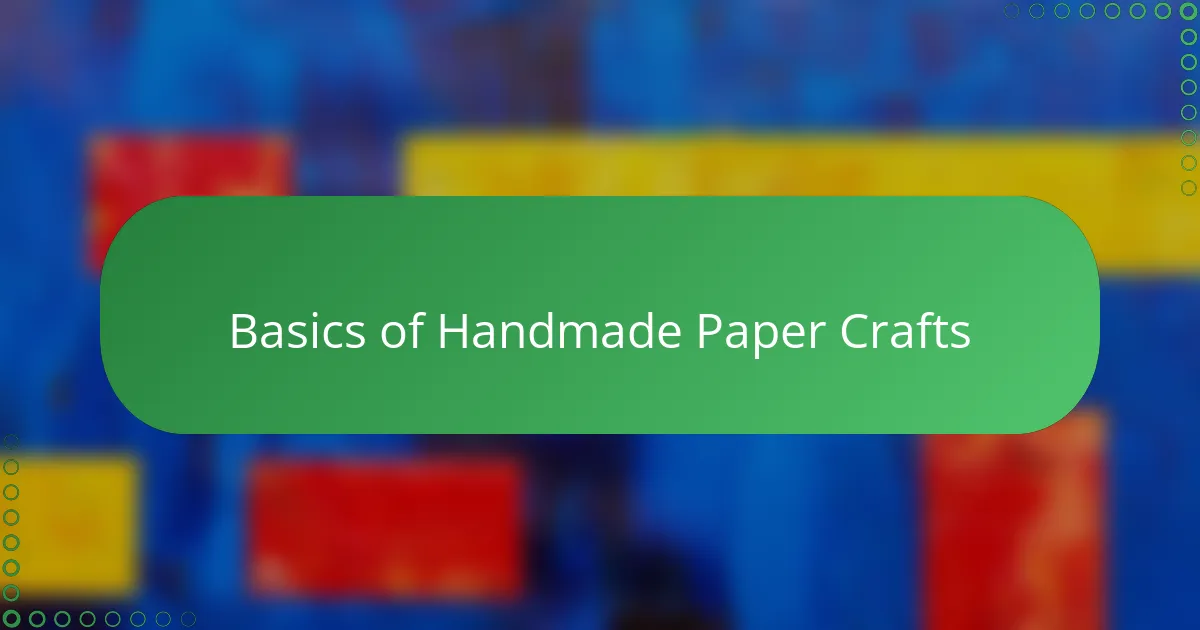
Basics of Handmade Paper Crafts
Handmade paper crafts are all about transforming simple sheets into something truly special. From the texture of each piece to the slight irregularities in shape, these qualities give handmade paper its unique charm. Have you ever held a piece and noticed how delicate yet full of character it feels? That’s what makes working with it so rewarding.
One thing I’ve learned over time is that the process of creating handmade paper involves patience and attention to detail. Whether you’re embedding flower petals or experimenting with different fibers, each step shapes the final product’s look and feel. It’s like watching a blank canvas slowly come to life, a bit like what happens when you add Mod Podge later on.
For anyone diving into handmade paper crafts, understanding the paper’s properties is key. You quickly realize how absorbent and fragile it can be, which influences how you handle it during crafting. Have you noticed how careful you become with each fold and cut, knowing that one wrong move could change everything? That sensitivity is part of the joy and challenge in this art form.
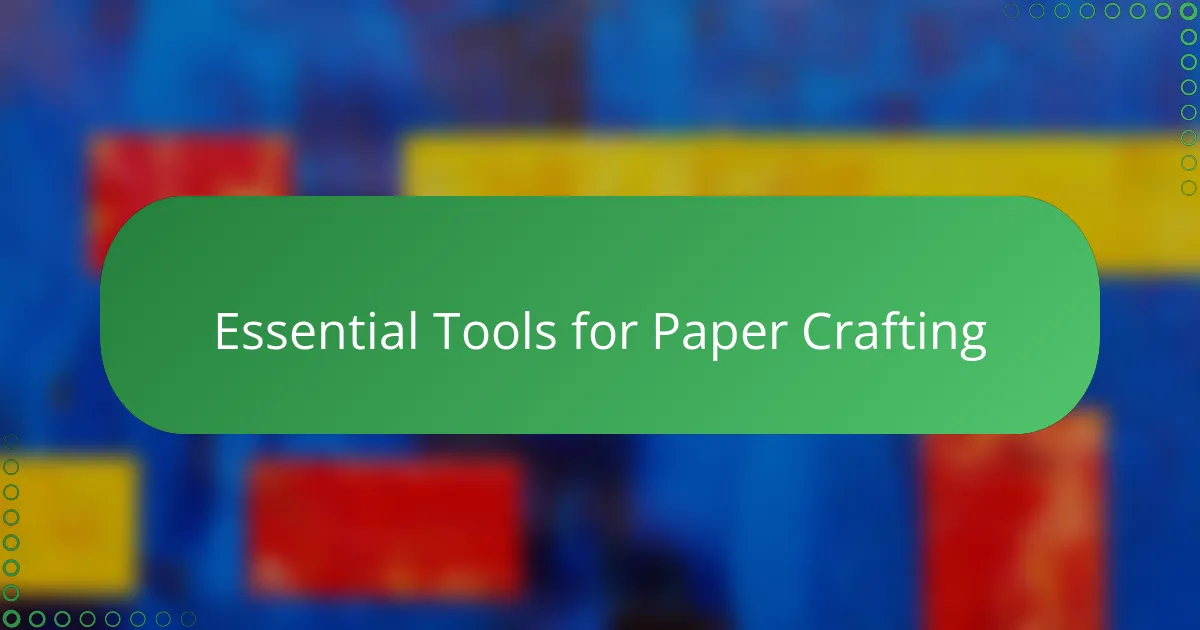
Essential Tools for Paper Crafting
When I first started paper crafting, I quickly learned that having the right tools makes all the difference. A sharp craft knife and a sturdy cutting mat became my best friends—they allow for precise cuts without the frustration of tearing delicate handmade paper. Have you ever tried cutting without these essentials? It’s like using dull scissors on fabric—frustrating and disappointing.
Another tool I rely on daily is a set of good-quality brushes. Since Mod Podge plays such a crucial role in my projects, using soft, synthetic brushes ensures a smooth, even layer without damaging the paper surface. I remember accidentally using a rough brush once; it left unwanted streaks and made the paper pill, reminding me how important this small detail is.
Finally, I can’t emphasize enough the importance of a bone folder or a similar tool for creasing folds. When working with handmade paper, clean, crisp folds bring a professional edge to your creations. Have you ever struggled with uneven folds that made your piece look rushed? That’s a sign you might need this simple but effective tool in your kit.
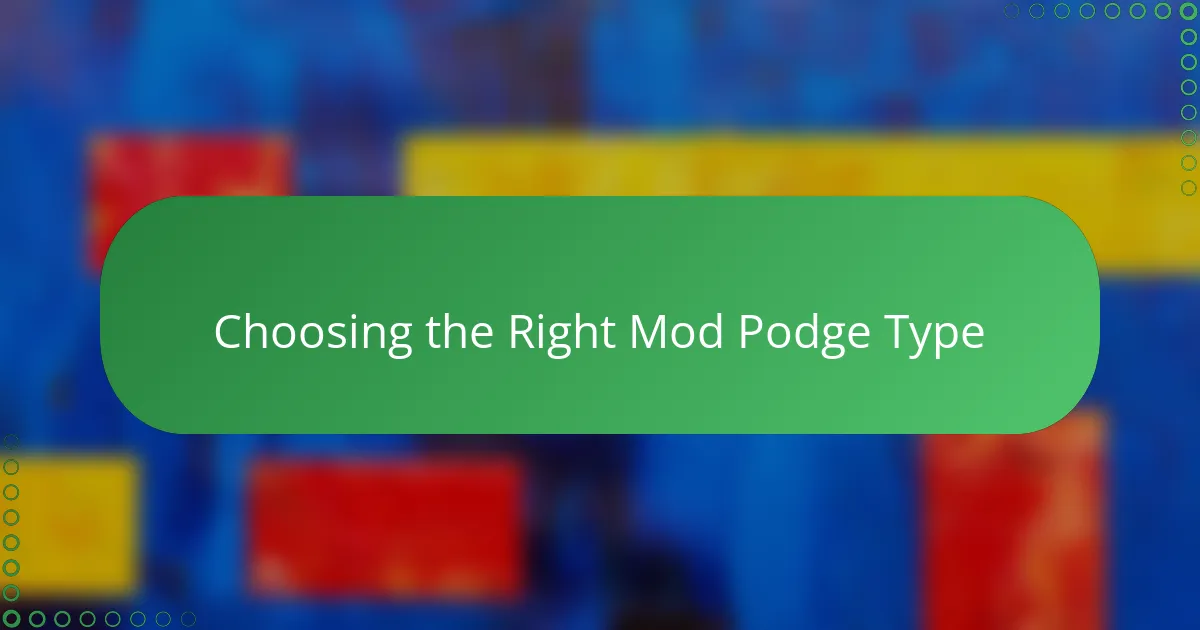
Choosing the Right Mod Podge Type
Picking the right Mod Podge type can really change the outcome of your handmade paper crafts. For instance, I once used the glossy finish on a delicate paper collage, and while the shine was beautiful, it didn’t dry as quickly as I hoped, which made me realize that the quick-drying matte version might have been better for that project. Have you ever rushed a craft, only to wish you had a different finish to save time and frustration?
Matte Mod Podge tends to be my go-to for most handmade paper pieces because it keeps the natural texture visible without adding unwanted shine. On the other hand, if I want a waterproof seal, especially when working with layered or structural crafts, I opt for the outdoor or dishwasher-safe formulas. It’s like giving your paper an extra layer of armor, which I’ve found invaluable when gifting my works or displaying them long-term.
Sometimes, I experiment with specialty Mod Podge types, like the fabric or sparkle varieties, even though I’m primarily working with paper. It’s exciting to see how these adapt and bring unique effects, but I always take a moment to test a small piece first. Have you done a trial run just to avoid surprises? Those little tests save so much heartache later on.
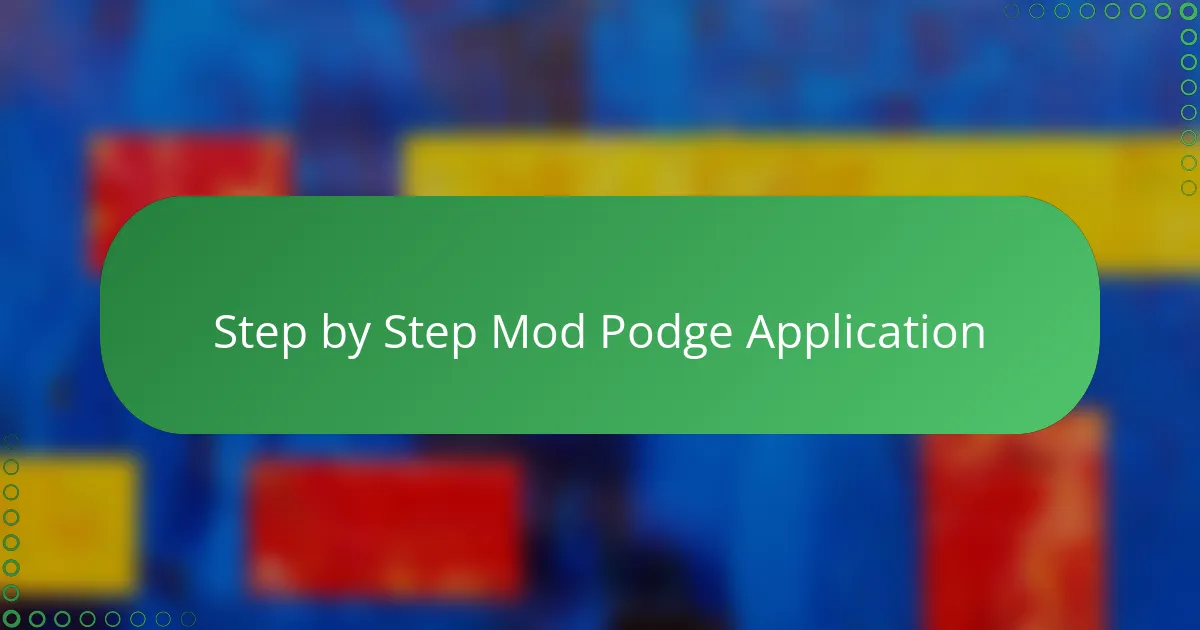
Step by Step Mod Podge Application
Applying Mod Podge is a straightforward process, but I’ve found that taking it step by step really makes a difference. I usually start by brushing a thin, even layer onto the piece of handmade paper, making sure to cover every edge without saturating it. Have you ever experienced that panic when your paper wrinkles because you applied too much? That’s why I keep my brush strokes light and deliberate.
Once the first coat is dry to the touch, which usually takes about 15 to 20 minutes, I add a second layer for extra durability and a smooth finish. I’ve noticed that this build-up not only seals the paper but also enhances the colors underneath, almost like giving them a gentle glow. Do you find yourself waiting anxiously to see how the final layer will transform your work? That anticipation is part of what makes crafting so rewarding.
After the final application, I always let the project cure completely—sometimes overnight—before handling it extensively. Rushing this step has taught me the hard way that patience pays off; the sealed surface is much stronger and resists smudges or scratches better when fully cured. Have you ever tempted fate by rushing this drying stage, only to regret it later? I certainly have, and that lesson stuck with me!
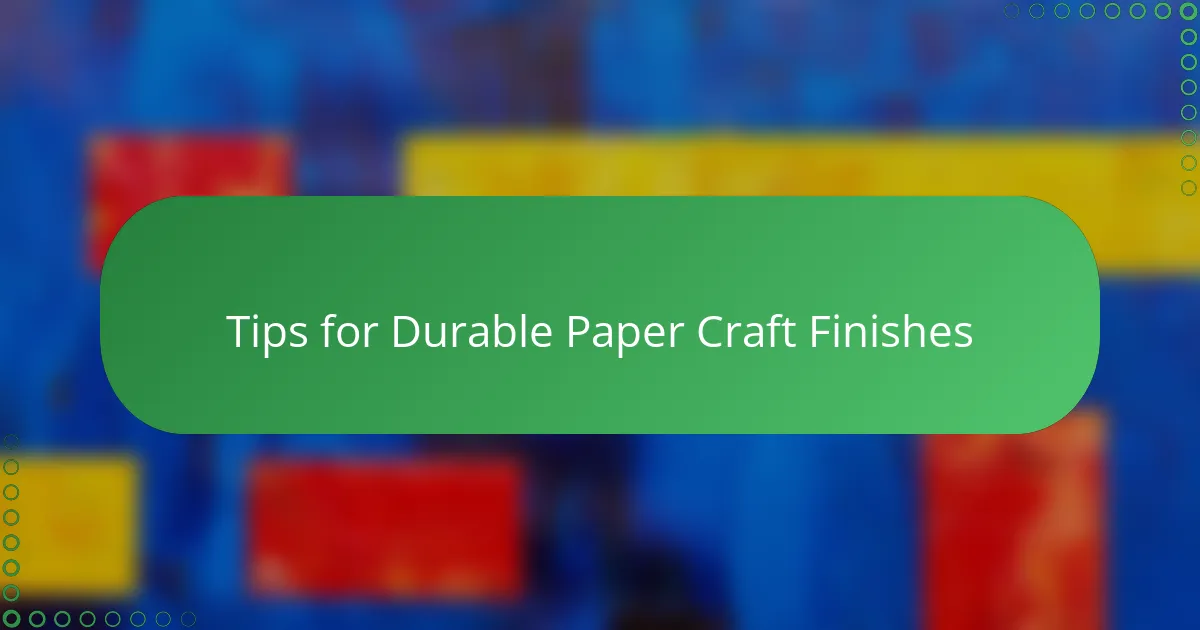
Tips for Durable Paper Craft Finishes
Achieving a durable finish on handmade paper crafts with Mod Podge isn’t just about slapping on a coat and calling it a day. I’ve found that applying multiple thin layers, rather than one thick one, makes all the difference—each layer builds strength and smoothness without warping the paper. Have you ever wrestled with a bubbly, uneven finish? That’s the result of going too heavy too fast.
One trick I’ve come to rely on is lightly sanding between coats with super fine sandpaper. It sounds a bit intense for delicate paper, but done gently, it really helps the Mod Podge adhere better and creates a silky surface that feels like glass. It’s a small extra step that transforms a project from “nice” to “keeper.” Have you tried this technique? It always surprises people how much smoother their paper-craft finishes become.
Lastly, patience is key. Letting your project dry fully—sometimes overnight—before handling ensures your finish won’t chip or flake off. In early projects, I learned the hard way that rushing the process often ended with annoying wrinkles or sticky spots. Taking that extra time feels like safeguarding your work, and honestly, it makes the final reveal that much sweeter. How often do you force drying and end up regretting it? I’m guilty too, and now I’m much gentler with my craft’s timing.
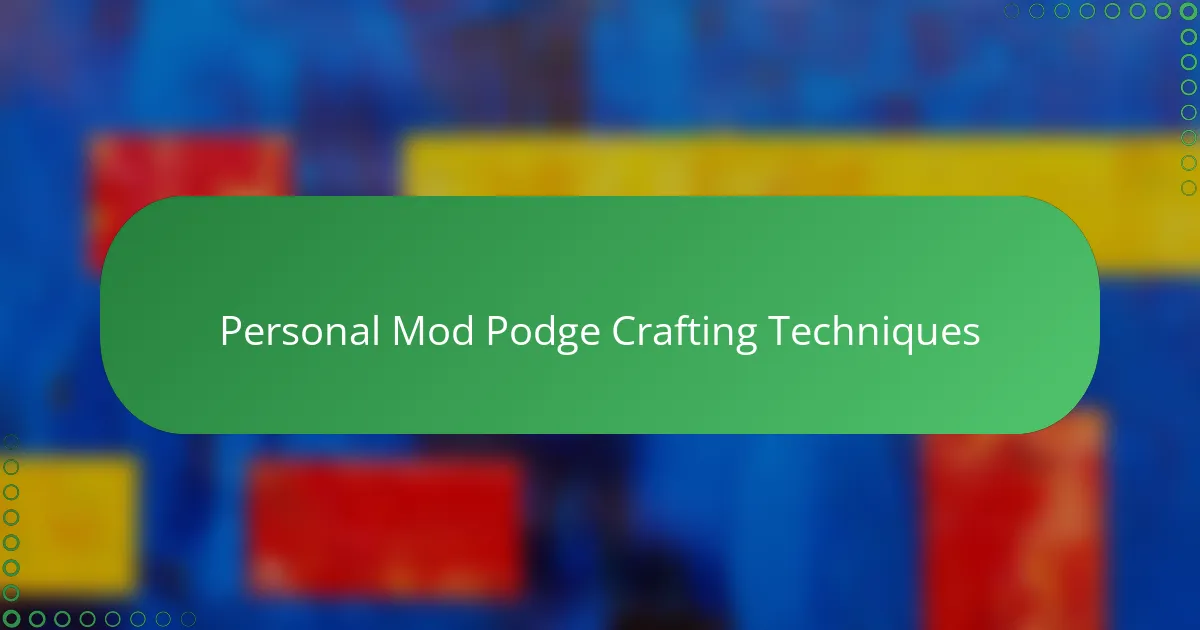
Personal Mod Podge Crafting Techniques
When I craft with Mod Podge, I always start by lightly sanding the handmade paper before applying any layers. It might seem unusual, but this small step helps the Mod Podge grip better, creating a smoother, more resilient finish. Have you ever been frustrated when your Mod Podge peels off too soon? This technique has saved me from that disappointment more times than I can count.
Another method I swear by is using a soft foam brush to apply each Mod Podge layer. Brushes with stiff bristles once left me with unwanted streaks and rough patches, so switching to foam made a huge difference in achieving that even, glass-like coating. Isn’t it amazing how something as simple as changing your brush can transform your entire project?
I also like to let each coat cure completely—sometimes overnight—to avoid wrinkles and smudges. Early on, I was always in such a hurry to see the final result that I rushed this step, only to end up with ruined pieces. Now, I embrace patience as part of the process; it’s like giving my paper crafts the respect they deserve, and the results certainly show it. Have you had moments where waiting paid off in ways you didn’t expect?
